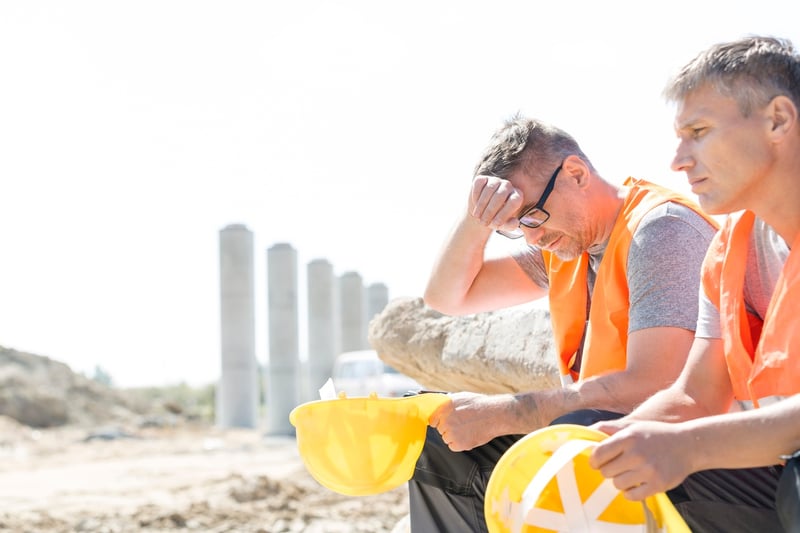5 Ways to Beat the Heat While Working Outside

In 2011, the Occupational Safety and Health Administration (OSHA) launched their Heat Illness Prevention campaign, which promotes the importance of water, rest and shade to better protect workers from the effects of heat-related illness. High temperatures and direct sun exposure resulted in 31 heat-related worker deaths and 4,120 heat-related worker illness in 2012 alone and can induce severe health problems like heat stroke, heat exhaustion and heat rash.
As the summer months quickly approach, it’s imperative to equip yourself and others with the resources needed to create a safer workplace. Open dialogue and tips like these, will help you and fellow workers in preventing heat related illness.
Here are 5 ways to beat the heat while working outside:
Wear the Right Type of Gear
Wearing the right materials, colors and accessories is key when working outdoors. OSHA recommends wearing light colored, loose fitting clothing in a lightweight fabric, like cotton. Always keep a wide-brimmed hat and UV-absorbent shades on hand to shade your face and protect against the sun’s harmful ultraviolet rays.
Another great accessory to have on demand is sunscreen. Wear a broad-spectrum sunscreen, like these, that protect against skin damaging UVA and UVB rays.
Stay Hydrated
The rule of thumb is to drink eight 8-ounce glasses, or a half gallon, of water per day. However, when working in blistering temperatures, it’s recommended to increase water intake to about four cups every hour while the heat index is 103 to 115 degrees. Encourage workers to hydrate often and limit other beverages, like coffee or soda, which can lead to dehydration.
Take Breaks to Cool Down
Pushing yourself in the hot, hot heat can lead to extreme heat exhaustion. Instead, schedule larger, more physical tasks for the early morning when the sun is far from being at its highest point. It’s also best to established rest cycles or break schedules early in the day so that you or other workers aren’t pushing to get the job done. Aim for a 15 minute rest period every hour during high temperatures.
Seek Shade Throughout the Day
During your breaks or rest cycles, find a shaded spot that will protect you from the direct sunlight. Don't have the luxury of a shady tree or established structure? Set-up a portal free-standing structure, like a canopy or large umbrella, to shade yourself and fellow workers. This will help cool you down and create a hub for water or non-physical work activities.
Engage in Proper Outdoor Training
An investigation by CAL/OSHA, found that almost half of their heat-related illness cases involved workers who were either on their first day of work or had only been on the job for four or fewer days. For industries like construction and landscaping, it’s important for employers to offer proper training programs and establish a workload that allows workers to acclimate themselves to the elements before engaging in full physical or manual labor. The Centers for Disease Control and Prevention (CDC) recommends no more than 20% of the usual duration of work in the heat on day one and no more than 20% increase on each additional day.
It’s important to remember that outdoor workers aren’t the only ones who may encounter heat-related injury or illness. Firefighters, factory workers and even bakers are susceptible to feeling the effects of heat stress. Be mindful of symptoms like confusion, profuse sweating, and high body temperatures, which can all be signs of heat stroke.
As temperatures increase, prepare a planning checklist to ensure both you and fellow workers are taking appropriate precautions to minimize the risk of heat-related illness.
Other Posts You Might Be Interested In
Subscribe to email updates
Stay up-to-date on what's happening at this blog and get additional content about the benefits of subscribing.


